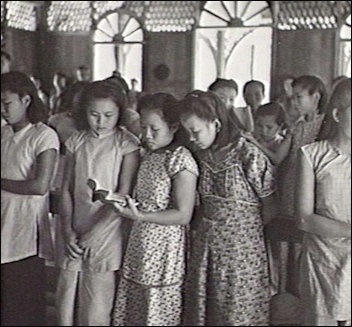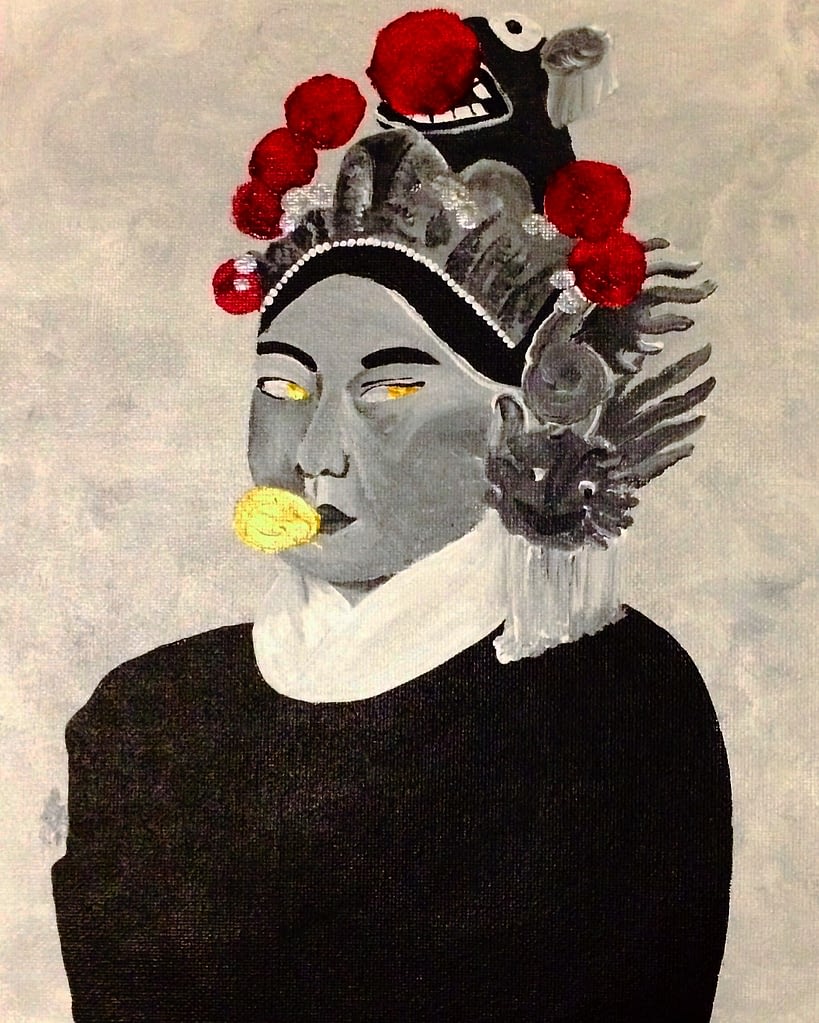Malaysia’s Influence on Asian Culture

Historical Influence of Malaysia on Asian Culture
Malaysia’s rich tapestry of history has played a pivotal role in shaping various cultures across Asia. It’s no surprise that this small nation serves as a crossroads for diverse ethnicities and traditions, each contributing their own flavor to the regional identity.
Malay Cultural Influence
The Malay culture, deeply rooted in the region, has significantly influenced neighboring countries. Traits like hospitality, community bonding, and a wealth of oral traditions are hallmarks of Malay culture. Traditional dances and craftwork, such as:
- Wau (kite-making)
- Batik (fabric design)
have inspired similar practices across Southeast Asia, promoting a shared cultural heritage that symbolizes unity amongst diversity.
Indian Cultural Influence
Indian traders and settlers have woven their artistry and spirituality into the Malaysian fabric, introducing elements such as:
- Hindu and Buddhist temples throughout the region
- Spiritual festivals , including Thaipusam
The profound impact of Indian cuisine is evident, with thousands savoring dishes like roti canai and nasi kandar, blending Indian flavors into Malaysian favorites.
Chinese Cultural Influence
Chinese communities have thrived in Malaysia, introducing vibrant traditions, festivals, and culinary delights. The celebration of Chinese New Year with its dragon dances and lantern festivals brings life to the streets annually. Additionally, the persistence of Chinese art forms such as:
- Calligraphy
- Martial arts
demonstrates the seamless integration of Chinese heritage into Malaysian culture, further emphasizing Malaysia’s role as a unique cultural bridge within Asia.
The confluence of these cultures has intricately shaped not just Malaysia but also its surrounding regions, creating a dynamic, multicultural tapestry that continues to evolve.
.jpg)
Malaysian Cuisine and its Impact
Malaysia’s culinary landscape is a mouthwatering reflection of its multicultural heritage, influencing food lovers far beyond its borders. The unique flavors and ingredients of Malaysian dishes not only delight the palate but also foster connections among diverse communities across Asia.
Nasi Lemak
Often hailed as Malaysia’s national dish, Nasi Lemak embodies the essence of Malaysian cuisine. This fragrant rice cooked in coconut milk is typically served with:
- Sambal (spicy chili paste)
- Fried anchovies
- Peanuts
- Hard-boiled egg
- Cucumber slices
Each element complements the others, creating a perfect harmony of flavors. Many Malaysians fondly remember family gatherings around this dish, where its rich taste ignites nostalgia and warmth.
Satay
Satay is another iconic Malaysian delicacy that has travelers and locals alike clamoring for more. Skewered and grilled to perfection, these spiced meat skewers are often served with:
- Peanut sauce
- Rice cakes
- Cucumber and onion
At festive gatherings or street food stalls, sharing Satay sparks conversations and brings people together—a fantastic example of how food can create bonds across cultures.
Teh Tarik
No meal is complete without a cup of Teh Tarik, Malaysia’s beloved pulled tea. This delightful beverage made by “pulling” hot tea and condensed milk creates a frothy concoction that’s smooth and sweet.
- Teh Tarik’s preparation is a show in itself, drawing crowds who marvel at the skill involved.
- Every sip fosters a sense of community as friends and family gather at local cafés to enjoy this iconic drink.
Together, these dishes showcase Malaysia’s rich culinary heritage, reminding everyone that the joy of food can transcend borders and unite us in our shared love for delicious meals.

Malaysia’s Contribution to Music and Dance in Asia
As Malaysia continues to evolve culturally, its contributions to music and dance resonate throughout Asia. With a dynamic blend of traditional and contemporary influences, Malaysia has become a vibrant hub for artistic expression that enriches the region’s cultural tapestry.
Traditional Dance Forms
Malaysia’s traditional dance forms are a captivating reflection of its diverse heritage. Each dance tells a story, often steeped in the beliefs and customs of various ethnic groups:
- Zapin: Originating from the Malay community, this dance is characterized by lively rhythms and intricate movements, often performed during festive occasions.
- Maharaja Lela: A traditional dance from the indigenous Orang Asli people, it mimics nature and animal movements, celebrating their deep connection to the earth.
Watching these performances is mesmerizing; there’s something magical about how they connect the audience to the roots of Malaysian culture.
Contemporary Music Scene
In more recent times, Malaysia has embraced modern music, creating a vibrant contemporary scene that resonates across Asia. Genres like pop, rock, and hip-hop reflect the diverse influences at play:
- Artists such as Yuna and Joe Flizzow have captured hearts both locally and internationally, blending traditional sounds with modern beats.
- Music festivals , like the Rainforest World Music Festival, gather talents worldwide, showcasing Malaysia’s rich soundscape.
This dynamic shift in music not only highlights Malaysia’s evolving identity but also demonstrates how traditional sounds can harmoniously merge with contemporary influences, paving the way for exciting cross-cultural collaborations.
Together, these traditional and contemporary expressions of music and dance exemplify Malaysia’s unique position as a cultural bridge in Asia, enriching the region’s artistic landscape through vibrant performances and innovative sounds.

Malaysian Festivals and Celebrations Across Asia
Festivals are integral to Malaysian culture, offering a glimpse into the country’s rich diversity. These vibrant celebrations foster unity while allowing each community to express its unique traditions, values, and beliefs. Let’s explore some of the most celebrated festivals that resonate across Asia.
Hari Raya Aidilfitri
Hari Raya Aidilfitri marks the end of Ramadan, a month of fasting for Muslims. This festival is a heartfelt celebration characterized by:
- Open houses: Families invite friends and neighbors, irrespective of religion, to join in the festivities, promoting harmony and understanding.
- Delectable feasts: Dishes like lemang and ketupat are traditional favorites, enjoyed alongside sweet treats such as rendang and biskut raya.
The warmth of familial bonds during this time comes alive as children receive duit raya (monetary gifts), adding an element of excitement and joy.
Chinese New Year
The celebration of Chinese New Year is a dazzling spectacle that brightens Malaysia’s streets with red lanterns and festive decorations. Key elements include:
- Lion dances: Exhilarating performances symbolize prosperity and good fortune, captivating onlookers throughout the festivities.
- Family reunions: This occasion is a time for families to come together, share meals, and exchange angpao (red envelopes).
The joyful atmosphere creates a sense of community, making it a favorite among Malaysians and visitors alike.
Deepavali
Known as the Festival of Lights, Deepavali is celebrated by the Indian community in Malaysia, illuminating homes and hearts. Key highlights include:
- Rangoli designs: Colorful patterns adorn doorsteps, inviting positive energy and blessings into homes.
- Festive foods: Sweets like murukku and laddu tantalize taste buds, showcasing the richness of Indian cuisine.
Deepavali not only signifies the triumph of light over darkness but also fosters cultural exchange among communities, embodying the spirit of unity.
Through these significant festivals, Malaysia beautifully showcases its multicultural essence, proving that celebration transcends differences and fosters bonds among diverse communities across Asia.

Malaysian Fashion Trends in Asian Countries
Fashion in Malaysia is a vibrant reflection of its rich cultural heritage and contemporary sensibilities. With influences from various ethnic backgrounds, Malaysian fashion stands out as a dynamic blend of traditional and modern styles, gaining recognition in Asian countries and beyond.
Traditional Attire
Malaysia’s traditional attire showcases the diversity of its cultural communities. Each ethnic group has its own distinctive clothing, often worn during festivals and significant events. Some popular examples include:
- Baju Kurung: A traditional outfit worn by Malay women, characterized by its modest cut and flowing design, often paired with a matching headscarf.
- Cheongsam: A body-hugging dress popular among the Chinese community, displaying intricate patterns that symbolize good luck and prosperity.
- Kurta: Popular among Malaysian men, this long tunic is often worn with loose trousers, embodying both comfort and elegance.
These traditional garments not only reflect Malaysia’s cultural richness but also inspire fashion trends in the region, celebrating heritage through modern interpretations.
Modern Fashion Industry
In contrast, the modern fashion industry in Malaysia is flourishing, showcasing a fusion of global trends with local artistry. The rise of local designers and brands has led to innovative styles and a unique fashion scene, highlighted by:
- Fashion weeks: Events like the Kuala Lumpur Fashion Week spotlight emerging designers, drawing attention from international media and style enthusiasts.
- Streetwear: Influenced by global trends, Malaysian streetwear embraces quirky designs and bold patterns, often featuring locally-inspired graphics.
Personal experiences at trendy markets in Kuala Lumpur reveal that both locals and tourists are enthusiastic about purchasing pieces that blend modern aesthetics with cultural influences.
Together, traditional attire and contemporary fashion illustrate Malaysia’s evolving fashion landscape. As the country continues to gain traction in the Asian fashion scene, it reinforces its position as a cultural melting pot, bridging the gap between age-old traditions and modern innovations.

Malaysian Influence on Language and Literature in Asia
Language and literature serve as powerful tools for cultural expression, and Malaysia’s linguistic heritage offers a fascinating glimpse into its diverse influences. The evolution of Bahasa Malaysia and its literary contributions not only reflect the country’s identity but also resonate across Asia.
Bahasa Malaysia
Bahasa Malaysia , the national language, plays a pivotal role in uniting Malaysia’s multicultural population. Its unique features include:
- Loanwords from Arabic, English, and Tamil: Reflecting the country’s rich history of trade and interactions with various cultures.
- Simple grammar: Making it accessible for learners, even outside Malaysia, promoting its spread across the region.
Personal experiences with language exchange programmes reveal how this linguistic bridge fosters communication and understanding between Malaysians and neighboring countries, encouraging cultural appreciation.
Literary Works
Malaysian literature showcases the country’s myriad voices, influenced by its multicultural society. Key highlights include:
- Poetry and novels from authors like A. Samad Said and Petronella Breinburg, who intricately weave themes of identity, race, and social issues into their works.
- Folklore and oral storytelling: These traditional narratives preserve pre-colonial history, passing down values and cultural heritage from generation to generation.
I fondly remember discovering Malaysian poetry that encapsulates profound emotions, illustrating life’s struggles and triumphs, resonating deeply with readers not only locally but throughout Asia.
Through the lens of Bahasa Malaysia and its rich literary tradition, Malaysia’s influence extends beyond its borders. This cultural exchange enriches the tapestry of Asian literature, fostering connections and a shared understanding within the region.

Impact of Malaysian Architecture and Art in Asian Culture
The intricate interplay of architecture and art in Malaysia reflects its vibrant cultural diversity. From stunning mosques and temples to exquisite traditional crafts, these artistic expressions significantly influence and inspire architectural styles and art forms across Asia.
Mosques and Temples
Malaysia is home to several magnificent mosques and temples, showcasing remarkable architectural styles that blend Islamic, Hindu, Chinese, and indigenous influences. Notable examples include:
- Petronas Twin Towers: An iconic symbol of Malaysia, seamlessly blending Islamic geometric patterns with modern design.
- Masjid Negara (National Mosque): This mosque features sweeping lines and a striking blue roof, creating an inviting atmosphere for worshippers.
Visiting places of worship like the Sri Mahamariamman Temple in Kuala Lumpur is a spectacle in itself, where colorful decorations and intricately carved figures invite awe and admiration. These structures not only serve spiritual purposes but also highlight Malaysia’s rich cultural heritage, drawing architecture enthusiasts from around the region.
Traditional Crafts
Traditional crafts play a significant role in preserving Malaysian cultural identity, with skilled artisans creating stunning handmade items that reflect the country’s diverse heritage. Among these crafts are:
- Batik: This wax-resist dyeing technique results in vibrant textile designs, often inspired by natural motifs and myths.
- Songket: A luxurious handwoven fabric featuring intricate gold and silver threads, commonly used for ceremonial attire.
From personal encounters at local markets, the passion and dedication of craftspeople are palpable as they share their stories and techniques, contributing to a deeper appreciation of their art. These traditional crafts not only sustain cultural practices but also inspire contemporary art movements across Asia.
In essence, Malaysia’s architectural marvels and rich artistic traditions resonate significantly across the continent, shaping cultural narratives and sparking creative dialogues among diverse communities. The enduring influence of these forms encourages a shared identity that celebrates unity amid diversity.

Malaysian Films and Entertainment Industry in Asia
The Malaysian film and entertainment industry has been gaining momentum on the international stage, showcasing a unique blend of storytelling and cultural narratives that resonate with audiences across Asia and beyond. This evolution reflects not only the country’s artistic talent but also its diverse cultural landscape.
International Recognition
In recent years, Malaysian cinema has garnered significant international attention, showcasing the country’s filmmaking prowess. Notable achievements include:
- Awards and nominations at prestigious film festivals, such as the Cannes Film Festival and the Tokyo International Film Festival.
- Films like “The Act of Killing” and “Sepet” receiving critical acclaim for their innovative storytelling and strong character development.
Personal experiences watching Malaysian films at local screenings reveal the enthusiasm and support of audiences eager to celebrate homegrown talent, fostering a sense of pride and identity.
Cultural Themes
Malaysian films often explore rich cultural themes that reflect the nation’s diversity, incorporating elements such as:
- Multiculturalism : Stories that weave together the lives of different ethnic groups, highlighting shared values and experiences.
- Social issues : Films often tackle contemporary challenges, including urbanization, identity conflicts, and the importance of heritage.
For instance, movies like “Bunohan” and “Ola Bola” not only provide entertainment but also spark vital conversations about national identity and unity, illustrating how cinema serves as a medium for cultural exploration and dialogue.
In summary, Malaysia’s growing film and entertainment industry captivates audiences through its international recognition and culturally rich narratives. With each film, the industry continues to strengthen its influence, contributing to a greater understanding of Malaysia’s diverse identity within the broader Asian context.

Growing Popularity of Malaysian Traditional Medicine and Wellness Practices
In recent years, Malaysian traditional medicine and wellness practices have garnered increased interest, not only locally but also internationally. This revival highlights the importance of holistic health approaches, connecting people to their cultural roots while exploring effective alternatives to conventional medicine.
Traditional Healing Methods
Traditional healing methods in Malaysia encompass a variety of practices passed down through generations. Key aspects include:
- Batu Pahat: A form of physical therapy utilizing stones to alleviate pain and promote healing.
- Bomoh: Traditional healers who use spiritual methods to treat ailments and restore balance.
I fondly recall visiting a local bomoh, where the serene ambiance and deep-rooted knowledge provided comfort during challenging times. These practices remind us of the healing power found in nature and spirituality.
Herbal Remedies
Malaysian herbal remedies play an essential role in traditional medicine, with a diverse array of plants used for their therapeutic properties, such as:
- Tongkat Ali: Known for its potential to boost energy levels and enhance vitality.
- Kacip Fatimah: Often used by women for overall reproductive health and hormonal balance.
The rich tapestry of herbal knowledge often leads to interesting conversations in local markets, where passionate vendors share stories of their herbal concoctions. These remedies not only promote wellness but also foster a deeper appreciation for Malaysia’s botanical heritage.
With a growing inclination toward well-being rooted in traditional practices, Malaysian traditional medicine is carving out a significant niche in the wellness landscape. This revival serves as a reminder of the value of heritage and nature in pursuing holistic health.

Conclusion: Malaysia’s Enduring Influence on Shaping Asian Culture
As we reflect on the remarkable impact of Malaysia on Asian culture, it becomes clear that this vibrant nation serves as a bridge between diverse traditions and modernity. The interplay of its rich heritage has not only enriched its own identity but also influenced many countries across the region.
A Cultural Melting Pot
Malaysia’s position as a melting pot of cultures fosters a unique and dynamic environment where art, music, language, and culinary delights flourish.
- Cultural festivals encapsulate the essence of community bonding, allowing individuals to appreciate and celebrate their differences.
- Traditional and contemporary practices meld seamlessly in fashion, enriching the regional aesthetic.
I often find myself fascinated by Malaysia’s fusion of old and new, where a vibrant street market can exist alongside contemporary art galleries, showcasing the rich tapestry of the nation.
A Lasting Legacy
The lasting legacy of Malaysian culture resonates well beyond its borders.
- Malaysian films and literature spread captivating stories that spark dialogues and provoke thought.
- Traditional medicine and wellness practices are embraced for their holistic approaches, influencing wellness trends across Asia.
In essence, Malaysia’s enduring influence is a testament to its ability to evolve while honoring its roots. As it continues to shape and inspire cultural narratives in Asia, Malaysia stands as a beacon of harmony, celebrating the beauty of diversity and connection.




